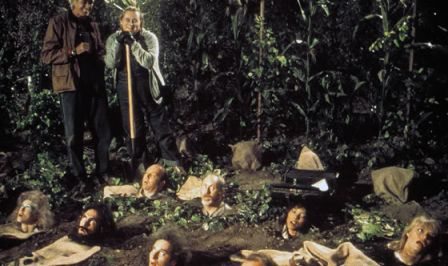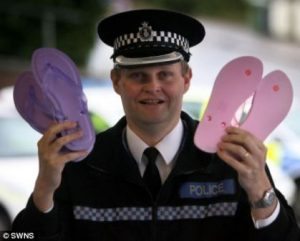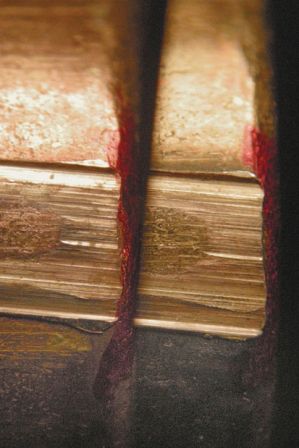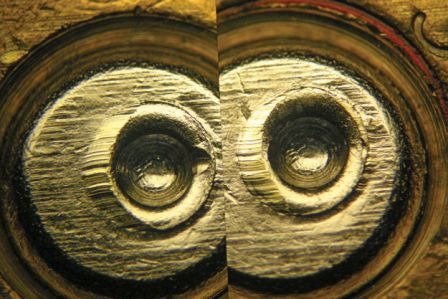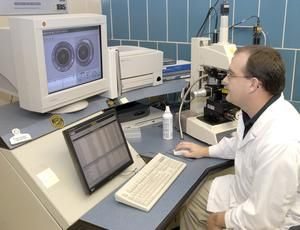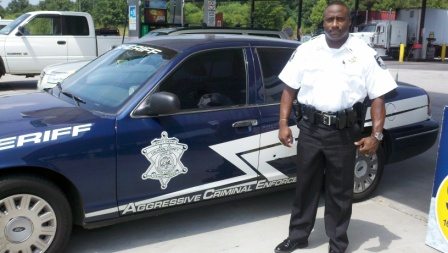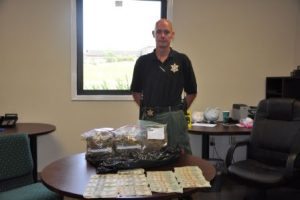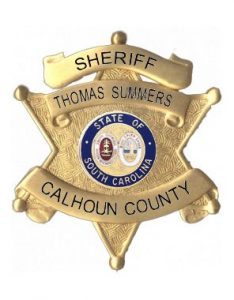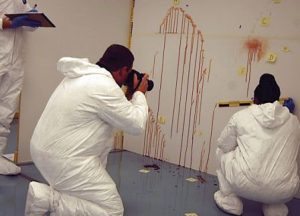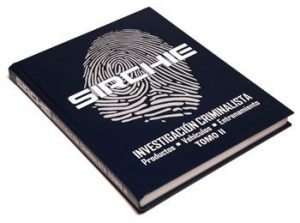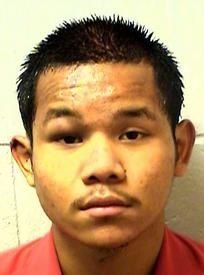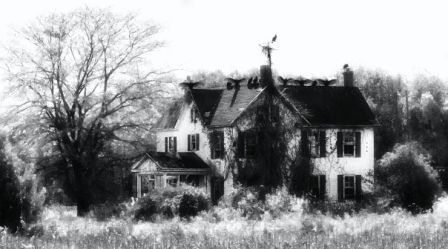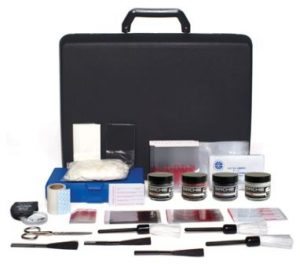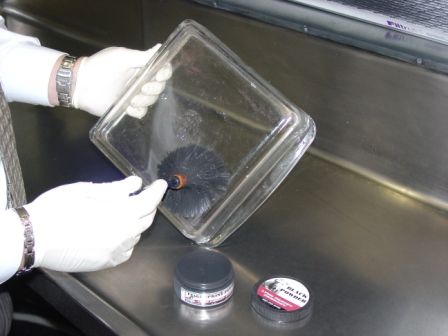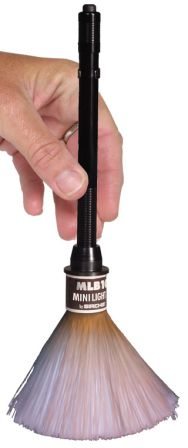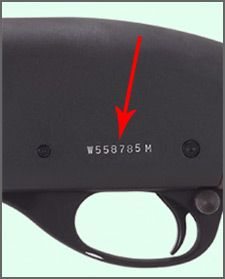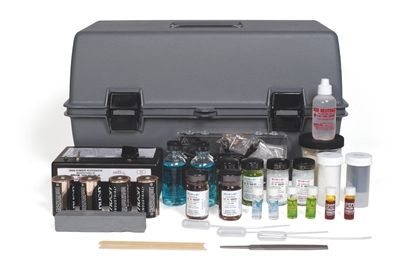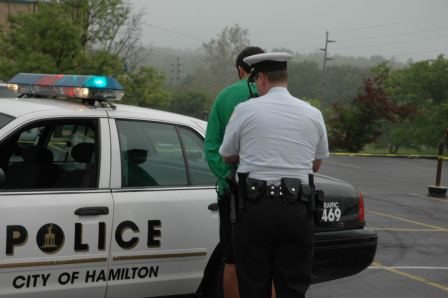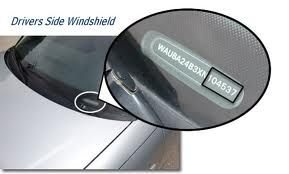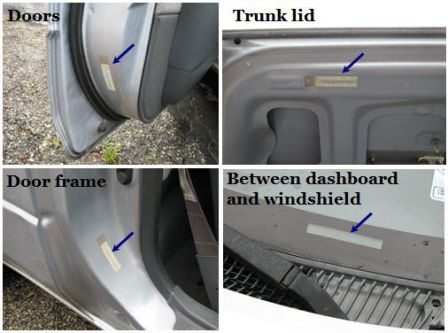Well, it’s finally here…moving day. Yep, my bags are packed and we’re off on another adventure. So…no blog today. But, after the dust settles and Mayberry is in my rear-view mirror, I’ll be back at it. Right now, there’s lot’s of track to cover before dark…
Your first call of the day shift is not supposed to be like this. Summers are hot, even in the morning and here you are, responding as CSI to a “suspicious smell” call to 911, before 10 AM. Maybe, it’s just an animal hit by a car. They can really stink up a large space this time of the year. As you pull off of Stanford onto Delivery, you pick up the smell, even with the windows up in the van and the A/C on “MAX.”
As you exit your vehicle, the acrid sour stench invades every part of your sinuses. The eyes begin to water, your mind races as to the source of the emanation. The yellow crime scene tape hangs limp, as if melting in the morning heat. The first officer on the scene meets you from the other side of the tape, her face a mask of disgust and indifference as she greets you.
“It’s a nice one… shallow grave,” Deputy Morales states, her hand held closely over her mouth. “Glad you’re here. I hope you are up to this. Why does my shift always get the nasty ones?”
A decomposing human body is a complex challenge to the crime scene investigator. It’s not just the smell; you get used to that. Usually, the body has been left in a small place that, minute by minute, is rapidly decaying or breaking down into component parts. No matter if the deceased is inside a structure or outside, you are racing against time to photograph and process the scene before the key evidence to help bring justice to those who are responsible for the heinous act is lost forever.
What does the crime scene photographer or evidence technician face when he or she reaches the scene of a grisly death? How does one get over the “complications” of smell, sight, feel… did I mention smell, of death in a found body event? Couple these concerns with the certain invasion of ants, flies, beetles, and wasps, whose sole function is to eat as much of the crime scene as possible before their own life cycle comes to an end, and you are facing a daunting task to bring justice to another victim of man’s cruelest inhumanity to man- cold-blooded murder.
In this September’s Writers’ Police Academy, a new interactive learning experience has been added to the already impressive line-up of classes, workshops and labs planned for the WPA participants. At least two sections of “The Shallow Grave Crime Scene” will be held during the event, to give the writers first hand contact with a buried body crime scene. The sessions will not be just another classroom examination of a topic, but will provide session attendees the opportunity to actually step into a simulated human remains burial site. Participants will have the opportunity to go inside “the tape” and photograph the scene, and potential evidence found there. Writers in attendance of the sessions will be exposed to the sights AND smells of a realistic shallow grave site.
In modern American crime fiction, as well as true crime works, thousands of characters have found themselves placed in a hole and covered with soil. Most writers have to envision the task of digging a space large enough to conceal a human corpse based on the literature, or films they have encountered. In these sessions, individuals will actually take part in the digging of a shallow grave. Participants will know the hard work and complexities that accompany the efforts to conceal violent behavior, as they will be exposed to the tools of the killer’s trade- the shovel, the pick, the bag of lime, and black plastic. Participants will learn the importance of each tool and will be able to add this realistic opportunity to their repertoire of life experiences.
The Writers’ Police Academy, scheduled for September 23-25, 2011 at Guilford Technical Community College in Jamestown, North Carolina is THE place for crime novelists to come and experience many of the things they write about. As an instructor, the WPA gives us the opportunity to share tips and techniques, theories and facts to help provide that “extra spark” of realism in a novel or true crime book. In this day of real trials, real crimes and real criminals, the WPA hopes to lift the writer above the rest, giving their work the gritty veteran level of knowledge that will separate them from just another book.
If you want to see and smell the crime scene as you have not experienced it before, and use the tools of the cold-blooded killer to create a “hiding” place for your prey, you may want to attend the “Shallow Grave Crime Scene” workshop. Come prepared with your digital point-n-shoot camera, or the trusty old 35mm film camera. Crime scene photographs will be limited to those registered for the workshop.
Sturdy footwear, like athletic shoes, will be the shoe of choice for this event. We are going to be in the woods, flip-flops, sandals, fuzzy bunny slippers or other thin forms of “scoots” may not suit you.
If you are going to dig, have a pair of gardening gloves or leather hand protection from Mr. Mattock or Mr. Shovel. Knit mittens won’t last long, especially with perspiration levels at high during the course.
If you have questions, contact me at Guilford Technical Community College at welanning@gtcc.edu or get with Lee. He knows how to find us.
See you in September,
Bill Lanning
Assistant Professor
Criminal Justice Department
Guilford Technical Community College
In prehistoric times, when crime-solving technology was basic, almost non-existent, evidence-matching was a daunting task. Remember those days? You know, way back in the early 2000’s… Well, bullet-to-firearm matches were especially tough in those oh-so-distant times. Investigators first recovered spent ammunition, the bullet or bullet fragments and/or the part of the round that once contained the powder (cartridge). Then they set out on the mission of trying to match those bullet parts to the weapon that fired them.
Markings on the surface of a fired bullet – Larry Reynolds photo
Two fired cartridges – Larry Reynolds photo
To do so, they examined the recovered evidence for specific markings left behind by the firearm—lands and grooves left by the pattern inside the gun barrel, and firing pin and ejector marks left on the cartridge.
Then, investigators set out on the mind-numbing task of manually searching scores of image databases and other evidence comparison collections, hoping to locate a match to their piece of evidence. And it sometimes took forever and a day to find a match, if then.
Well, in 2003 a new star in the evidence-matching world was born…IBIS. The Integrated Ballistics Identification System. IBIS is totally automated, much like the AFIS and CODIS systems (fingerprint and DNA systems). Once IBIS hit the scene, investigators were able to enter an image into the system, starting a search of images from all databases AND from all current, on-going, and past crime scenes. And all this is done automatically, without having to paw through page after page of pictures.
But, it’s still not like you see on TV. There’s no moment where an image of a bullet pops up on a computer screen next to a picture of a suspect, complete with the thug’s address, phone number, and shoe size.
Investigators still must compare the items by hand and eye to determine that the two images, the image of the evidence and the database image, are indeed a match.
background: #bd081c no-repeat scroll 3px 50% / 14px 14px; position: absolute; opacity: 1; z-index: 8675309; display: none; cursor: pointer; top: 188px; left: 20px;”>Save
As many of you know, I field an awful lot of questions from writers—“What kind of gun does a detective carry?” “What are all those little thingy’s on a cop’s gun belt?” “Do police officers have to take off their gun belts when they use the restroom?” And the ever popular, “Have you ever shot anyone?” But, I’m guessing the number one question of all time is, “How do I approach a police officer to ask him questions for my work-in-progress?”
Most police officers are actually quite willing to help you out, if you just ask. That’s the key to this whole problem. You’ve got to ask. I promise, the officer will not bite…well, maybe you shouldn’t try this during the noon buffet at the local Chinese restaurant…but under normal circumstances you’ll be fine. But don’t be shy!
Here’s a great example. I travel a lot, especially between our place in Georgia and our home near Mayberry (Hey, Barney!). The drive takes approximately six hours which translates into just over a tank of gas. So, during one of my fuel stops I happened to park beside a patrol car. The driver, a sheriff’s lieutenant, was cleaning the windows and pumping gas into his blue-and-white marked car. (Learn the various collar insignias. Officers appreciate being addressed by their rank, especially the officers with gold bars, stripes, stars, and eagles on their collars).
The markings on the officer’s patrol car, “Aggressive Criminal Enforcement,” is not something you normally see on a police car and it obviously had attracted a bit of attention. Customers were casually walking past the car, chatting among themselves. I heard one lady say to her companion, “I wonder what that means?” A man walked past, turning his head so hard to the right he looked like an owl. Two women walked up and pretended to talk about a business across the street while actually getting a better look at the police car. As they walked away one said to the other, “I wish I knew what he did.”
Well, you know what? At that point I was wishing I knew what the lieutenant did, too. So, you know what I did? Yep, I went completely crazy and did the unthinkable…I walked over and before I could stop myself, I heard these words fall out of my mouth, “What exactly is Aggressive Criminal Apprehension?” There. I’d done it. I’d gone where no writer dares to go. I asked a cop a question. Right there. Right out in the open where the whole world could see. And an amazing thing happened.
Without blinking an eye, that well-armed, muscular police officer turned to face me. Our eyes locked. A bead of sweat trickled down my back. He took a deep breath. So did I. And then it happened… He answered my question. And he did it with a smile on his face. You see, Lieutenant S. Graham of the Calhoun County S.C. Sheriff’s Office is extremely proud of the work he does.
In just a matter of minutes, I learned that Lt. Graham is actually a detective with the sheriff’s office, but he also serves on the Aggressive Criminal Enforcement Team, a team of deputies that was formed in 2005 to combat drug crimes, and to work in areas of Calhoun County that need “extra attention.”
Calhoun County deputy and evidence seized during drug interdiction operation
For example, you all know that interstate highways are used to transport narcotics. Calhoun’s A.C.E. unit patrols the interstate looking for the indicators of drug trafficking (I can’t tell you what those indicators are…for a cop’s eyes and ears only…or, another blog post). I’ve worked drug interdiction in the past and the time spent working the highways really pays off. Believe it or not, the simple question, “May I search your car?” yields tons of dope arrests each year. Why people say yes to that question, knowing they have a dozen kilos of coke in the trunk, amazes me.
Each member of the A.C.E. team receives specialized training in the detection of narcotics and the workings of narcotics cases.
A unit such as Calhoun’s A.C.E. is extremely beneficial to the department. I once headed up what we called “Street Crimes Unit,” which functioned basically the same as Lt. Graham’s team. Not only was the unit effective against drug crimes, it allowed patrol officers to devote the majority of their time to answering calls and, well, patrolling.
Anyway, after the lieutenant and I finished chatting, I asked if he’d pose for a photo for my collection. Afterward, we shook hands and promised to stay in touch, and I headed back to my car (the gas pump had long ago clicked off). But, by this time a small crowd had gathered to see what was going on. Well, as I walked away the crowd moved toward Lt. Graham.
Just as I was was sliding into the driver’s seat I heard a woman ask, “What’s Aggressive Criminal Apprehension?” I saw Lt. Graham turn to face her. The two locked eyes. And that same big smile split the lieutenant’s face as he started the story all over again, this time to a half-dozen people.
So, I have this response to the most-popular question of all time…Just ask and they will answer.
*My thanks to Lt. S. Graham for answering my questions. It was 100 degrees in South Carolina that day. And it was even hotter standing on the asphalt. Also, thanks to Calhoun County Sheriff Thomas Summers and his dedicated deputies. The residents of Calhoun County are in good hands..
How would you like to attend one of the most elite evidence collection courses in the world? The week-long, exclusive session at Sirchie Fingerprint Laboratories is normally offered to law enforcement only, but I’ve made arrangements for 20 writers to attend. The event is tentatively scheduled for the summer of 2012 (July or August) at the Sirchie compound outside Raleigh, N.C.
This will be a Monday through Friday Noon course that covers state–of-the-art methods of identifying, recording, collecting, processing and transporting physical evidence found at the scene of a crime. The program is geared for “hands-on” use of equipment, materials, and supplies necessary for a thorough and comprehensive evidence collection mission and fully conforms to the training Sirchie® has conducted for over thirty years to thousands of officers from the world wide law enforcement community.
If you are interesting in attending this once-in-a-lifetime event please contact me immediately. Space is limited to the first 20 people who sign up. Believe me, this course is highly-sought after by the best-of-the-best crime-solvers in the world, and there’s a very long waiting list. So we’re extremely fortunate to have made it possible for a select few writers to go where no civilians have gone before.
COURSE CURRICULUM Includes:
Crime Scene Investigation
The various types and categories of physical evidence are reviewed with the emphasis being placed on the proper procedures for securing the crime scene and the proper sequence for the collection of evidence.
Fingerprint Theory
The fundamental principles of fingerprints are examined, including the basic concepts of ridge pattern development, identification characteristics and classification methods.
Latent Fingerprint Development – Powders
The proper use of oxide, metallic and magnetic powders are discussed. Students will develop latent prints on a variety of porous and non-porous surfaces, glass and polished metals. Photographic techniques are covered along with the use of various print lifting devices such as tape, hinge lifters and rubber lifters.
Latent Fingerprint Development – Chemicals & Vapors
During this session, students will develop latent prints on various surfaces, utilizing iodine fuming, ninhydrin, DFO and silver nitrate. Chemical fixatives and removers will also be covered as well as the chemical development of latent blood prints. A second session is devoted to the development of latent prints using cyanoacrylate (superglue) fuming techniques, sticky side powder and small particle reagents. Students will also learn the latest methods of locating and photographing latents without powder or chemical processing with SIRCHIE’S KRIMESITE ™ Imager.
Fingerprint Taking Techniques
Students will discuss and practice various techniques for achieving superior results when taking fingerprints and palm prints.
Fingerprint Classification and Comparison
Students will learn the fundamental techniques of fingerprint pattern interpretation in order to classify, search and file. The basics of comparison are reviewed.
Basic Photography and Crime Scene Sketching
Various procedures for taking crime scene photographs are discussed as well as the proper techniques for constructing crime scene sketches.
Biological Evidence
Students learn to presumptively identify biological fluids, including blood and seminal fluid, using various testing methods. Students will use chemical reagents to detect invisible traces of blood. The proper methods of collecting and handling rape and sexual assault evidence.
Controlled Substance Identification
Students will work with standardized presumptive field test kits to screen the most commonly abused drugs and narcotics.
Theft Detection Techniques
Students learn the uses of visible and invisible fluorescent powders, pastes, dyes, crayons, ink markers and other tagging devices.
Serial Number Restoration
Working with various metallic and plastic surfaces, students will restore obliterated serial numbers. Liquid and gel reagents are used in conjunction with the electron accelerator.
Firearms Residue Collection
Students will learn the proper methods for collecting primer and gunpowder residues from the shooter’s firing hand and/or clothing.
Tire, Footprint, Tool Mark
Impression evidence types and their value in criminal investigation will be reviewed. Students will have the opportunity to experience first hand the casting of footwear and tire impressions using various mediums. In addition, castings of tool marks and other impressions will be demonstrated.
*Again, please contact me for details immediately if you’re interested in attending. This course is available to the first 20 people who register. Also, there will be a very brief registration period. The registration fee for the week-long course is $600, the same price paid by law enforcement (hotels, meals, and transportation are the responsibility of the attendees).
*Please DO NOT attempt to register for this event on the Sirchie website. Registration is not yet open. The courses you see on their website are for law enforcement ONLY.
Deputy Sheriff Richard “Rick” Jerome Daly, 55
Clayton County Georgia Sheriff’s Office
July 20, 2011 – Deputies assigned to a sheriff’s fugitive squad spotted 17-year-old Jonathan Bun, a suspect wanted for robbery, getting into a car near his home. The deputies then followed Bun in their unmarked car, waiting for a safe place to conduct a traffic stop. When they were ready to make the arrest they called Deputy Rick Daily to make the stop with his marked patrol vehicle. Policy in most departments mandates that traffic stops be conducted by a marked patrol vehicle driven by a uniformed patrol officer. This is done to eliminate any doubt that it is indeed a police officer who’s stopping the vehicle.
As Deputy Daly approached the passenger side of the vehicle, Bun emerged firing a weapon. The rounds struck Daly in areas of his body not protected by his ballistic vest—shoulder and abdominal area. Officials believe the round to the abdomen was the fatal shot.
After shooting Deputy Daly, Bun fled into a nearby wooded area where a team of 40 officers quickly assembled and surrounded the section of woods where Bun was likely to be hiding. Once all officers were in place, tactical teams began slowly searching as a helicopter circled overhead.
It was a canine officer and his police dog who first made contact with the suspect. Bun attempted to evade capture but was immediately apprehended by the dog. The teen was transported to the hospital where he was treated for several bite wounds to his head and neck. Ironically, Bun received treatment in the same hospital where Deputy Daly succumbed to his wounds just hours before his killer was admitted.
Deputy Sheriff Rick Daly was a 25-year veteran who loved his job and wanted to help people.
Cop-killer Jonathan Bun, 17, has been charged with one count each of malice murder, felony murder, aggravated assault and possession of a firearm during the commission of a crime. Bun has been released from the hospital and is now in jail at an undisclosed location.
*100 line of duty deaths so far in 2011. 42 deaths from gunfire, a 25% increase over last year.
The deadline for the Golden Donut Short Story contest is approaching…FAST! Have you sent your entry?
The Writers’ Police Academy is pleased to announce the opening of the Golden Donut short story contest. The rules are simple—write a story about the photograph above using exactly 200 words, including the title (each story must include an original title). The image in the photograph MUST be the main subject of the story. All stories are to be polished and complete, meaning they must have a beginning, middle, and a twisted surprise ending. Again, all stories must be exactly 200 words. Not 201 or 199! So read the word count rules carefully.
The contest winner will receive the prestigious Don Knotts Golden Donut Award (sponsored by the High Point North Carolina Public Library and Krispy Kreme). All entries will be screened by a panel of authors who will select their ten favorite stories and then forward their picks to our judge, Kristen Weber. Ms. Weber’s decisions are final and may not be contested or appealed. After reviewing each of the entries, she will present the winning story title to the appropriate Writers’ Police Academy staff member and the winner’s name will be announced and award presented at the WPA banquet. The contest is open to everyone, not just attendees of the academy, and the winner need not be present to win.
Submission Guidelines:
1. All submissions MUST be submitted electronically via email to >lofland32@msn.com< (You’ll need to copy and paste the address, omitting the >< symbols). Each entry will receive a confirmation email. If you do not receive a confirmation with two business days, please feel free to contact me.
2. Write: Golden Donut Entry in the subject line of the email.
3. Please include your story within the body of the email. Attachments will not be opened.
– Contest opens at 6pm Monday June 13, 2011 (Please do not send any entries before this date).
Submission Deadline: Midnight August 19, 2011
– Any entry not meeting the exact 200 word requirement will be disqualified.
– Hyphenated words, for the purpose of this contest, will be counted as two words.
– Every single word will be counted as a word – this includes: “a,” “and,” and “the.” To be very clear…if it’s a word, count it. If it’s part of dialog and you think it may be a word, count it. If it’s a letter or group of letters, count it as a word. If it’s a smudge on the page, count it as a word.
– Be sure to include your name, address, email address, telephone number(s), and title of your story in an opening paragraph above your story (in the email entry). Then, please include your story, headed by the title.
– There is a $20 entry fee. You may submit the fee by Paypal (click the link on this page – Paypal link will be available sometime during the day on June 13, 2011)), money order, or check. Entries received without the appropriate entry fee will be excluded from the contest.
Please submit the entry fee and your story(s) at the same time. It is far too confusing to receive an entry one day and the entry fee weeks later. Entries received without the proper entry fee will not be considered.
– There is no limit on the number of entries by any author. But each individual entry must be accompanied by its own $20 entry fee. ( One entry = $20. Four entries = $80, etc.)
– Any entry not meeting the exact 200 word requirement will be disqualified.
– By submitting an entry to this contest authors agree to allow The Graveyard Shift/Lee Lofland/the Writers’ Police Academy, Sisters in Crime, and affiliates to publish/reprint the story as a part of The Graveyard Shift blog and/or as advertisement for the Writers’ Police Academy or Sisters in Crime, or in other publications and media, including, but not limited to, books, magazines, newspaper, blogs, ebooks, online outlets, etc. *Sisters in Crime is not a part of the Writers’ Police Academy.
*All rights to all work/short story shall remain the property of the author. The Writers’ Police Academy reserves the right to exclude or delete any entry without cause, reason, or explanation.
-No refunds. Proceeds go to the Writers’ Police Academy fund to benefit the GTCC criminal justice foundation.
So there you have it. Now get busy and take us on a journey that’d scare the pants off Poe himself. Did I just hear a scream coming from inside. Has someone been murdered? Or, was it the howl of a troubled spirit? Perhaps, a killer is using the old house as a hideout. Maybe, vampires live there. Who knows?
Good luck!
Dusting for latent fingerprints takes a little finesse. And to perform the technique properly and effectively requires practice. Lots of it. Yes, there’s an art to developing a nice, clean, usable print.
Like all decent artwork, proper tools are a must, such as a nice set of applicators (brushes).
You won’t find fingerprint brushes in your local hardware store because the ones used by crime scene investigators require special material.
So what is it that makes a fingerprint brush so different from other brushes? Easy answer…the extremely soft bristles. And where those individual bristles come from makes fingerprint brushes even more unique. By the way, many of you probably have a fingerprint brush somewhere in your home. Don’t think so? Well…
Marabou stork feathers are used to make fingerprint brushes. Marabou down is also used for clothing trim and fishing lures.
Cluster brushes are made from white goat hair. Goat hair is also used for makeup and artist brushes.
The long and super-soft hairs of the blue squirrel make for a long-lasting brush. Also used for artist brushes.
Fiberglass brushes are a favorite among investigators and this little gem is even equipped with a built-in LED light that illuminates the surface to be printed.
* Sirchie fingerprint brushes
* * *
A team from Sirchie Fingerprint Laboratories will be presenting workshops at the Writers’ Police Academy. I’m at Sirchie’s headquarters today, where I’m seeing the latest in CSI technology—from fingerprint brushes to Bomb Response Vehicles. These guys do it all!
Firearms are assigned serial numbers for the purpose of identification. When a gun is purchased, the buyer registers it with the proper authorities who record the owner’s name into a database along with the weapon’s serial number. If needed, law enforcement officials can then trace the number back to the original owner, or the owner to the gun, much like a driver’s license number can be traced to a driver.
Serial numbers are stamped into a weapon’s metal frame with extremely hard dies that push the numbers deeply into the steel.
Criminals, in an an attempt to be “untraceable,” often try to remove the serial numbers. The most common method of removing the numbers is to grind them away using, well, a grinder.
A firearm with a missing serial number is impossible to trace to its owner, right? Well, maybe not. Investigators do enjoy a bit of success at restoring serial numbers. You see, when the original number-stamping was performed, it was done with such force that the metal beneath the numbers is placed under permanent stress.
Number restoration kit – Sirchie Fingerprint Laboratories
Therefore, when the proper restoration agent is applied to the spot where the serial numbers once were, the strained particles/crystals dissolve at a much quicker rate than the undamaged metal.
Restoration gel for steel (also available for copper and aluminum).
And when those particles dissolve they leave slight indentations. And what do those indentations look like? You guessed it…the original serial numbers.
Restoration reagents for plastics – Sirchie image
Okay, suppose the serial number is/was etched into the plastic body of a TV set. Well, there’s a reagent for restoring those numbers, too.
Now that you’ve restored all the numbers, a quick check into the database leads you to the bad guy. Then it’s a simple matter of locating the weasel, handcuffing him (using cuffs with deeply imprinted serial numbers), and taking him for a ride in a patrol car.
By the way, even that patrol car (yours, too) is equipped with numerous serial numbers—engine block, VIN number (vehicle identification number) on the dash, radio serial numbers, auto part numbers, VIN number stamped on the chassis, and many, many more.
VIN number is often located in the defrost vent in the driver’s side windshield.
Other VIN locations.
* Police officers often use VIN numbers to locate owners of abandoned and stolen cars.
Countdown to 2024 KILLER CON
Writers’ Police Academy
The 2024 Writers’ Police Academy is a special event called Killer Con, which is designed to help writers create stunning realism in their work, Killer Con focuses on the intricate details surrounding the crime of murder and subsequent investigations.
Visit The WPA website to register!
*The Writers’ Police Academy (WPA) is held every year and offers an exciting and heart-pounding interactive and educational hands-on experience for writers to enhance their understanding of all aspects of law enforcement, firefighting, EMS, and forensics.
Get to Know Lee Lofland
Lee Lofland is a nationally acclaimed expert on police procedure and crime-scene investigation, and is a popular conference, workshop, and motivational speaker.
Lee has consulted for many bestselling authors, television and film writers, and for online magazines. Lee has appeared as an expert on national television, BBC Television, and radio shows.
Lee is the host and founder of the Writers’ Police Academy, an exciting, one-of-a-kind, hands-on event where writers, readers, and fans learn and train at an actual police academy.
To schedule Lee for your event, contact him at lofland32@msn.com













